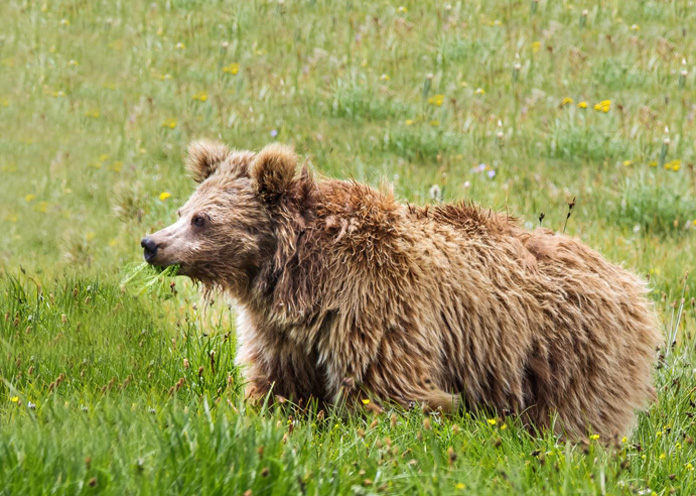
The word “yeti” conjures up a specific image in the folklore of Nepal and Tibet — a massive, shaggy, distinctly ape-like beast that wanders the frigid and desolate Himalayan snowscape. It certainly doesn’t evoke anything that looks like it’s about to impart wisdom about stopping forest fires.
But, according to a recent study published in the journal Proceedings of the Royal Society B, the latter description may be more accurate. Scientists have tested the DNA of purported Yeti remains and confirmed that yetis do exist — they’re just bears.
Researchers analyzed DNA from nine different samples, all collected in the Himalayas and Tibetan Plateau and supposedly from yetis. It was a macabre, mixed bag of parts — some hair, some bone, a bit of feces, and even some teeth. They also included fifteen other samples from various Asian bears, since a smaller study from a few years ago suggested that the yeti may be a rogue, polar-brown bear hybrid.

Every sample matched a known animal. No mysterious, unplaceable DNA. With the exception of the tooth, which was from a dog, all of the so-called Yeti samples were from bears. One came from an Asiatic black bear (Ursus thibetanus), and the others came from two rare, local species — Tibetan and Himalayan brown bears.
The new, detailed DNA evidence provides a real-world, biological origin for the Yeti, suggesting that local bears may have been the inspiration for stories of the terrifying creature. And while the DNA analysis doesn’t reveal anything “abominable,” the study does provide some coveted data on an understudied and critically-endangered group of brown bears.

Brown bears (Ursus arctos) range broadly across northern Eurasia and North America, and can be broken up into many distinct subspecies, each with minor physical and genetic differences. The two subspecies that turned up in the genetic analysis are quite rare, suffering from overhunting.
By comparing the bear DNA, the scientists determined that the Himalayan brown bear (Ursus arctos isabellinus) is a strange and old branch in the brown bear family tree, splitting off from all other brown bears about 650,000 years ago. Even though the Tibetan brown bear (Ursus arctos pruinosus) is a close neighbor, it’s far more closely related to other brown bears.
Looking at the Himalayan population, it’s easy to see how this weird and ancient brown bear offshoot could inspire the yeti’s mythology. It has a paler, sandier coat than most subspecies. Many Himalayan bears have a light mask of fur on the face that can make their faces appear shorter and more ape-like. Combine these features with the fact that the Himalayan bear is the largest animal in the mountains, and that their own extreme rarity matches the infrequency of contemporary yeti sightings, the animal seems like a solid candidate.
Genetic tools similar to those used in this debunking can easily be employed to test the remains of other purportedly undiscovered species. So, hear that, Sasquatch and Nessie? Your secret identities’ days may be numbered.




